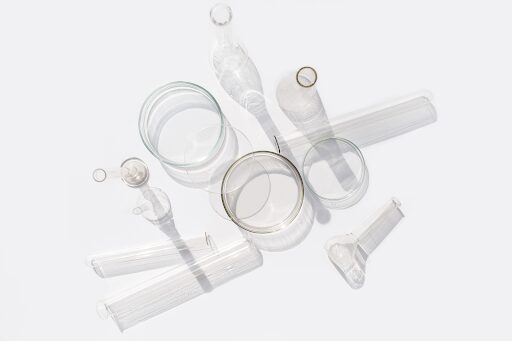In any laboratory environment, the tools you select can significantly impact your workflow, results, and budget. A major choice that lab managers and researchers have to make is whether to go with glass or plastic labware.
Glass is strong and can resist chemicals, but plastic labware is easier to use, safer, and often cheaper. Which option is best for your needs?
In this blog post, we’ll examine the pros and cons of glass and plastic labware to help you decide which is ideal for your lab requirements.
Pros of Laboratory Glassware:
Chemical Resistance
Laboratory glassware doesn’t react with most chemicals, so it’s safe to use with strong acids, bases, and solvents. It won’t break down or mix with what you’re working with.
Heat Tolerance
You can heat glass to high temperatures without melting or changing its shape. Additionally, you can sterilise glass in an autoclave, which is crucial for keeping things clean and germ-free.
Long-Lasting
When you handle glass labware carefully, you can use it for a long time. It doesn’t scratch easily and stands up well over time, even with frequent use.
Neutral Surface
Glass is non-reactive, so it won’t affect your samples or results. This makes it a good choice when accuracy is essential.
Transparent
Glass is naturally clear, so it’s easy to see what’s inside. This helps with measuring liquids and watching reactions happen.
Cons of Laboratory Glassware:
Fragile
Glass can easily break or shatter if dropped or exposed to sudden temperature changes, creating safety hazards and the risk of contamination.
Durable
Glass labware is often heavier than plastic, which leads to fatigue during extended lab work or when handling large amounts.
Higher Cost
Glass generally costs more upfront than plastic, which can be challenging for labs working with tight budgets or needing large quantities.
Pros of Laboratory Plastic:
Lightweight
Plastic labware is much lighter than glass, making it easier to carry, use, and transport, especially helpful during repetitive tasks or fieldwork.
Shatterproof
Glass is not as durable as plastic labware. It is perfect for busy labs because of its shatterproof design, which reduces the chance of mishaps.
Cost-Effective
Plastic labware is often less expensive, particularly when purchased in bulk or used as disposable products.
Wide Material Range
Plastic labware consists of polypropylene, polystyrene, and PTFE. These materials can endure various chemicals and temperatures, which makes them suitable for a range of applications.
Low Maintenance
Most plastic labware is for single use. You don’t need to clean or sterilise these items. Using them saves you time and lowers the risk of spreading contamination.
Cons of Laboratory Plastic:
Limited Chemical Use
Many plastics can degrade when exposed to strong acids, solvents, or high temperatures. This can lead to warping, leaching, or contamination, making them less suitable for demanding chemical or thermal processes.
Not Ideal for Sterilisation
Most plastic labware cannot withstand autoclaving or high-temperature sterilisation, which limits their use in experiments requiring strict sterility, such as microbiological work.
Environmental Impact
Disposable plastic labware contributes significantly to lab waste. While some plastics are recyclable, many are single-use items with limited sustainability options.
How to Choose the Right Labware
Type of Experiment
- Use glass for high-temp or chemically sensitive experiments.
- Use plastic for routine or low-risk tasks.
Chemical Compatibility
- Glass resists strong acids, bases, and solvents.
- Plastic works for general mixing, storage, or less aggressive chemicals.
Sterilisation Needs
- Use autoclave glass for maintaining sterile conditions.
- Many plastics can’t withstand autoclaving.
Budget
- Glass has a higher upfront cost but lasts longer.
- Plastic is cheaper and better for single-use or large-volume needs.
Durability and Safety
- Glass is durable but breakable.
- Plastic is shatterproof and safer in busy labs.
Environmental Impact
- Glass is reusable and more eco-friendly in the long term.
- Plastic contributes to lab waste but offers convenience.
The choice between glass and plastic labware is determined by your lab’s demands. Glass labware’s accuracy and resistance to heat and chemicals are crucial for precise research. However, plastic labware is a great choice for daily activities because it is affordable, secure, and simple.
By understanding the strengths of each material, you can build a setup that balances performance, safety, and sustainability. Techmate’s selection of laboratory glassware and plasticware is a good place to start for labs looking to explore quality options across both materials.
Looking for something else? Contact our team today, and we will be happy to help.

